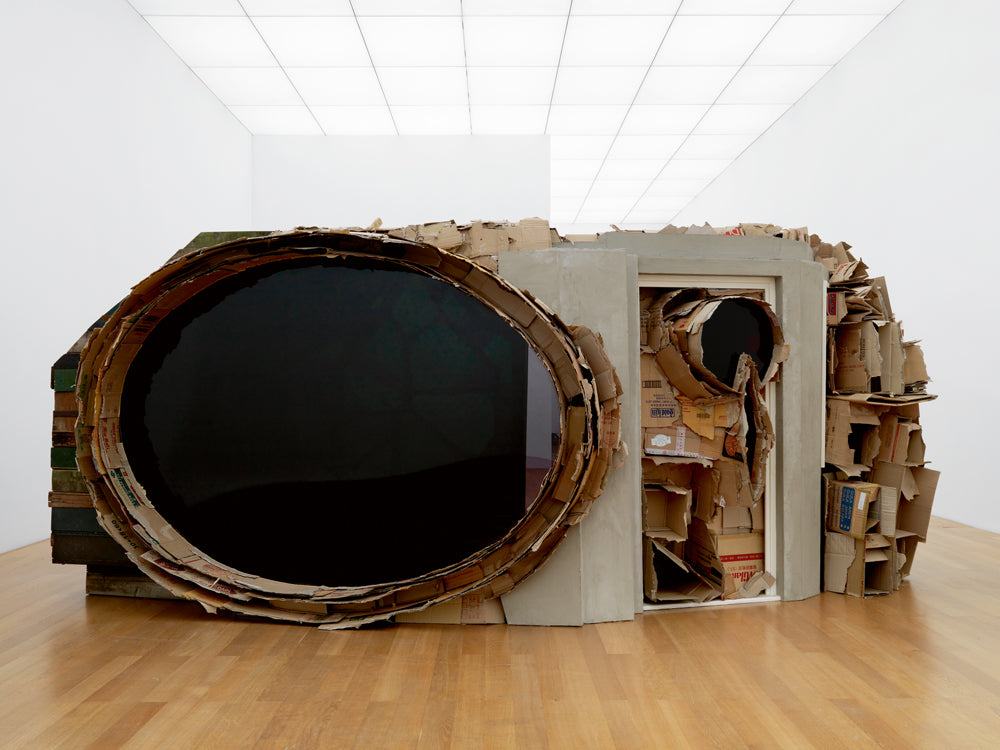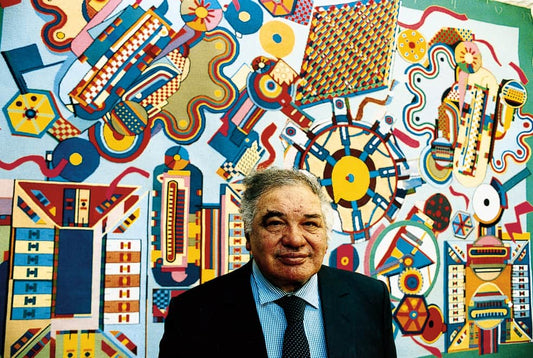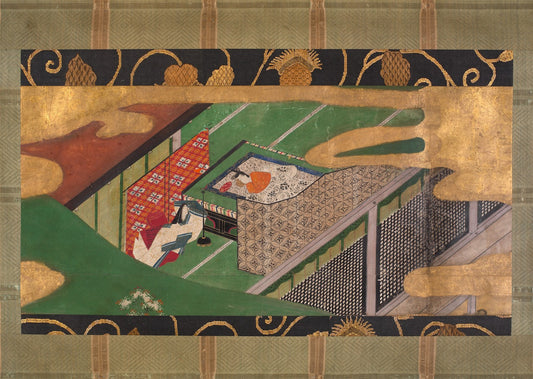Feature image: Rob Voerman, Tarnung #3, 2009, glass. Courtesy of Upstream Gallery. “Modernism as a Ruin" installation at Kunstmuseum Liechtenstein.
Metamodernism in the Arts
"A romantic reaction to our crisis-ridden moment." - Metamodernism in the Arts
Metamodernism refers to a 20th to 21st-century movement that embraces sincerity in arts and culture by operating as a response or reaction to postmodernism, seeking to move past the skepticism and ironies associated with postmodern thought. It tends to explore deeper emotional and philosophical layers, expressing a sense of authenticity and genuine engagement with an artwork. Metamodernism is more than a lens to analyze a canvas or performance installations.
It is “a romantic reaction to our crisis-ridden moment: the idea is to return to some feeling or affect,”

Postmodernism focused on deconstructing traditional norms and values, but it rejected the importance of grander, overarching narratives within the arts. Metamodernism’s existence as a response to postmodernism focuses on addressing the disconnect between sincerity and irony that postmodernism dismissed and largely ignored. Even though this art movement exists as a reaction to postmodernism, postmodernism also exists as a reaction to modernism, a prior art movement. Metamodernism’s goal of filling in the gaps that postmodernism largely ignored still reinforces the cyclic cause and reaction system that the fine arts are a part of.
“Just as science strives for poetic elegance, artists might assume a quest for truth. All information is grounds for knowledge, whether empirical or aphoristic, no matter its truth value. We should embrace the scientific-poetic synthesis and informed naivety of magical realism. Error breeds sense.”

A focus on Metamodernism in the Fine arts, as seen through Vermeulen and Akker
Metamodernism was coined by T. Vermeulen and van den Akker in 2010 in Notes on Metamodernism: Journal of Aesthetics & Culture. The pair began noticing works in the postmodern era that did not quite “fit” with the same messages and depictions from postmodern artists like Andy Warhol and Barbara Kreuger. To Vermeulen and van den Akker, however, metamodernism fills this gap because it "attempts to negotiate between such opposite poles as culture and nature, the finite and the infinite, the commonplace and the ethereal, a formal structure, and a formalist unstructuring." Postmodernism fell out of favor amongst artists because once the world reached its bounds, it still yearned for more meanings, symbols, and perspectives.

However, they could not just call their observations “post-postmodernism” because of obvious redundancy reasons. In addition, to name this new movement so similarly to its predecessor would undermine the messages metamodernism elevates, as they are the ones postmodernism left to the wayside. The Age of Radio brought about modernism, the Age of Television gave way to postmodernism, and the Age of the Internet brought about metamodernism, an added layer to centuries of cultural and artistic growth.
As seen through the critic and the viewer
Recently, more critics have tended to take on a more metamodernist lens when discussing works. In turn, artists are beginning to create under it because of its emphasis on affect, emotion, and subjective experience. This reinforces the metamodernist cycle we are seeing gain more and more traction within the fine arts space, providing space in an already tumultuous cultural and economic space to appreciate raw and unabashed feelings displayed in unconventional means.
In addition, this framework of philosophy offers an explanation for certain new trends in the art space, such as the rise and fall of cryptocurrency and NFTs. These innovations served as yet another marker for representing just how integrated technology and the arts have become. Even after the FTX collapse, we can still look back on the rise of NFTs and cryptocurrency as a means of understanding the integration of the arts, technology, culture, and the economy. Kovalova Mariia discussed how this evolution in digital currency. To a metamodernist, this integration represents the arts searching for and exploring new forms of value. Here, cryptocurrency served as a critique of current economic systems in the art market and an early attempt at trying to change it.

For everyday viewing, however, these messages only sometimes resonate. Some viewers might ask, “What is the point?” or simply state, “I just don’t get it,” or “I could do that.” The metamodernist would say…exactly! Not only does metamodernism shape how we understand these works, but a lack of understanding becomes the understanding itself because all meanings point back to the object itself. This reflexive relationship invites viewers of all levels of art consumption to challenge themselves on what it means to experience a work and, more importantly, to understand a work's meaning for yourself. However, all interpretations point back to how an installation might make you feel or make you remember.
“The central motivation of metamodernism is to protect interior, subjective felt experience from the ironic distance of postmodernism, the scientific reductionism of modernism, and the pre-personal inertia of tradition.”
Artist’s focus: Jonas Lund
One example of metamodernist work is Jonas Lund’s “The Fear of Missing Out.” (2013). The exhibition includes everything from displays of fashion trends and wrecked dirt bikes to ping-pong tables and interactive illustrations of social media statistics. The installation’s aim was to facilitate conversations on the relationship between art production, market trends within the contemporary art scene, and larger responses to art culture via social media.
While the commentaries elevated in these pieces hold merit in their messages, they require some historical context. When these pieces were displayed, Twitter was rolling out Vine. Social media still existed in an extremely limited capacity, as the social media giants (and legends, rest in peace, Vine) were still in their adolescence. Now, nearly a decade later, the social media space looks vastly different and is consumed by people worldwide throughout the day.
When this piece debuted, we weren’t far away from a time when we were saying, “It’s Wednesday, my dudes,” unironically on social media. Today, Coca-Cola is creating augmented-reality Snapchat filters of the Mona Lisa enjoying a bottle of soda to boost their strength on Instagram’s algorithm. Even over a decade later, the messages someone might find in this piece still resonate. No matter how rapidly social media consumption becomes, we can find a reflexive nostalgia in these pieces.
Artist focus: Agnieszka Polska
Agnieszka Polska is a multimedia visual artist from Lublin, Poland. She focuses her messages under the metamodernist lens by elevating the appreciation for intense, complex emotion alongside the eerie, surreal nostalgia of analog horror, found footage and liminal space capturing. Her work in digital animation incorporates found footage and analog archives to achieve an eerie, immersive experience for viewers.
“I try to create this sensation of being simultaneously immersed and disassociated,”
Her sculptural works were included in Frieze London in 2022. “Braudel’s Clocks” depicts six sculptures shaped like clocks that all function at differing speeds. As the clocks turn, each at their own pace, different objects like leave cigarette butts and insects remain on the face. Her sculptures create paradoxes of humor and grief as she represents multiple environments overlapping one another in space and time. The sculptures’ messages begin in the object and then travel through the viewer's experience, but their experience ultimately leads back to the clocks.
Metamodernism is reflexive, ambiguous, and paradoxical, with each layer of a work’s meaning building in nostalgia and reflection. However, as more artists align themselves with metamodernist perspectives in their work and continue filling those gaps, it raises questions on how the next era of the Arts looks and what the next generations of artists will cling to in their craft and reflect in their work. Metamodernism was born from Postmodernism’s shortcomings and failure to adapt to criticism from artists, critics, and viewers alike. It reimagined what it means to remember history through our own experiences and how everyday objects develop a level of sentiment as a result. We are in an era where art history is being restructured and digitized in the wake of ever-evolving technology, and I look forward to seeing what the newer generations of artists do in this new space.
©ArtRKL™️ LLC 2021-2024. All rights reserved. This material may not be published, broadcast, rewritten or redistributed. ArtRKL™️ and its underscore design indicate trademarks of ArtRKL™️ LLC and its subsidiaries.







